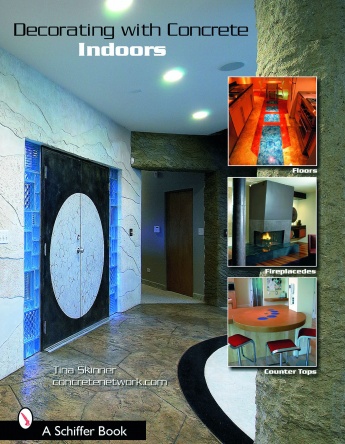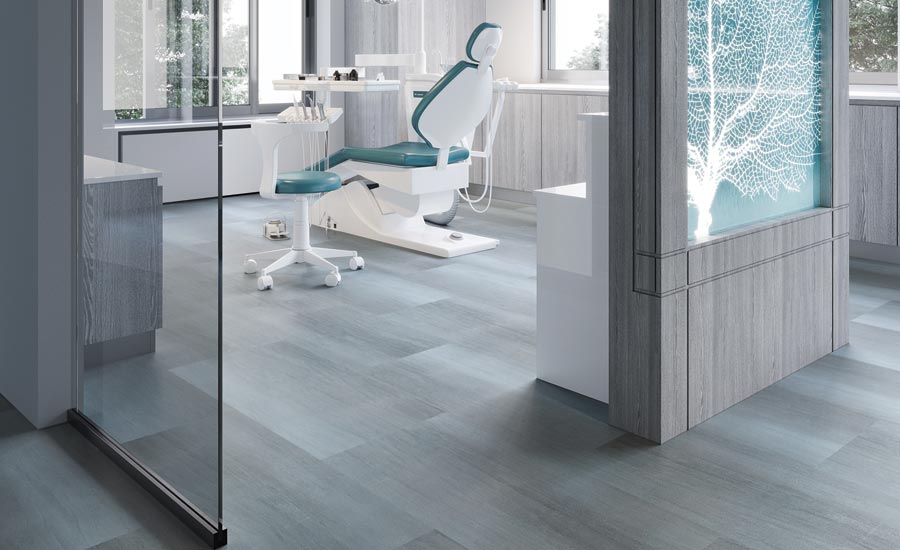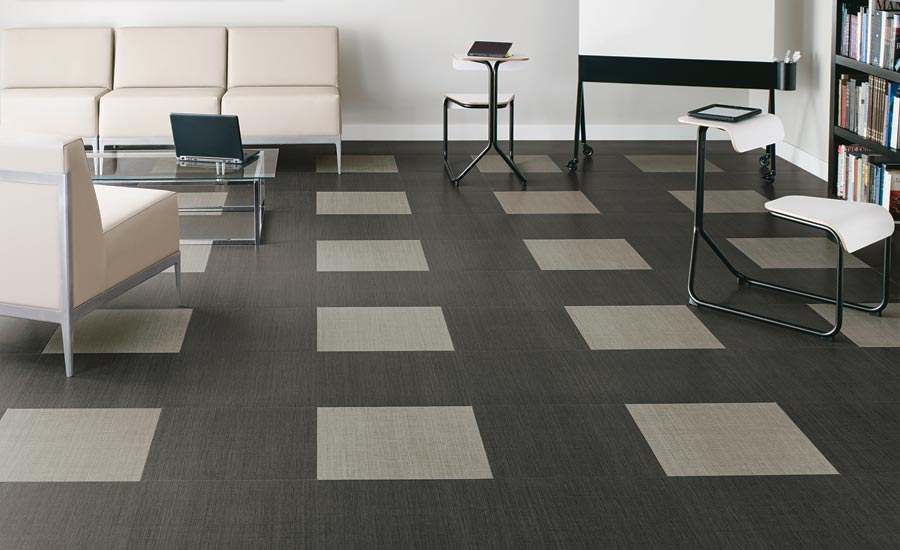Innovations in Flooring for the Evolving Healthcare Segment


Armstrong’s Natural Creations LVT with Diamond 10 Technology supports EBD design’s intent to deliver the benefits of natural patterns, colors and shapes.

No single flooring is ideal throughout most healthcare facilities, and J+J Flooring offers a variety of both hard and soft flooring solutions to meet customers’ needs.


As Yale New Haven Hospital continues to grow in the competitive healthcare market, M. Frank Higgins & Co. has provided the facility’s NICU with flooring that promotes a comfortable space to heal and get well.





Flooring in today’s healthcare facilities must fulfill both a practical and aesthetic role, and as the market continues to evolve and transform, we look to those who are manufacturing and specifying flooring for these facilities to learn what’s now and what’s next for the category.
Evolution of the Market
Healthcare in the U.S. is delivered by an assortment of what are known as models of care, and the attributes of any given model depend on several factors including cultural, demographic, geographic, regulatory and environmental. However, these models of care are in a constant state of flux, for several reasons, says Keith Gray, J+J Flooring’s director of applied research. According to Gray, what was state-of-the-art five years ago may not be today or tomorrow, so the opportunities are greatest for those who stay well-informed and particularly attuned to research, emerging trends, as well as established practices, and pay close attention to future adaptability in design.
With that, healthcare systems of all types and sizes are constantly competing to offer consumers a top-notch patient experience. “The concept of the patient experience continues to drive change in healthcare facilities,” said Amanda O’Neil, senior product manager at Armstrong. “Even cash-strapped facilities are making investments in their physical spaces to compete for patient business, as the built environment strongly influences perceptions about quality of care.”
Health systems are growing due to mergers and acquisitions according to Cynthia Hubbell, Mohawk Group’s vice president of healthcare and senior living. This creation of larger systems enables these groups to offer a larger, more comprehensive range of patient care and treatment services to the communities that they serve.
“One of our key clients is Yale New Haven Hospital, and they continue to grow as they buyout other local hospitals,” said Stephen Cloud of M. Frank Higgins & Co. With roughly 50% of its work being in healthcare, Cloud and his team are benefiting from the competitive market.
Ranging from a variety of acute care facilities to the changing face of senior living, healthcare business is booming, and according to the experts, branding is leading the way.
“Healthcare business is booming now and in today’s world of personalization and choice, we are no longer patients, we are healthcare consumers,” said Hubbell. “Branding is at the forefront of all our clients’ priorities. All the major health systems are competing against one another to retain existing clients and also attract new ones.”
Thoughtful Design
With flooring being an integrated part of a healing environment, manufacturers are developing systems of innovative solutions that can be used to encourage optimum health and wellness. And in a market that demands proven, documented performance, healthcare flooring manufacturers are learning the importance of defining their products in terms of human-centered properties and the ability to relate them to outcomes.
“Factual justification is expected of those flooring manufacturers who wish to compete for business,” said Gray. “It is now more widely understood that practical flooring performance attributes–specifically durability, health, maintenance/sanitization, safety, acoustics and comfort–should be considered based on real evidence as early in the design process as possible. This should be followed, of course, by lifecycle cost analysis, and finally aesthetic considerations.”
Defined by the Center for Health Design as the process of basing decisions about the built environment on credible research to achieve the best possible outcomes, this practice of evidence-based design (EBD) is heavily influencing healthcare flooring choices on both the manufacturing and design sides.
A concept that started out embryonic and not widely embraced, Gray says EBD has since merged into the mainstream of healthcare design practice, and some demonstrated level of competence in EBD is now essential to those firms competing for healthcare projects.
“EBD is an integral part of the design conversation because it guides practitioners, designers and researchers in creating a healing environment for patients, staff and visitors with a humanistic approach,” said Jigna Shah, vice president, healthcare strategic accounts, Tarkett North America. “EBD considers past experiences, explores current situations and provides solutions based on those findings, so that a sustainable, healthy environment can be achieved.”
Smart flooring choices not only have the potential to maximize efficiencies through faster installation and ease of maintenance, they also can improve patient satisfaction through noise reduction, cleanliness and colors and patterns that support a healing environment.
“Thirty years ago, one would see the same type of flooring throughout an entire hospital. Now, a mixture of products is used because the traffic and design needs vary from area to area.”
– Amanda O’Neil
“It is more generally accepted that the varying requirements of a given space within the hospital/satellite clinic/MOB will ultimately dictate which type of flooring is the right choice, and that no single flooring is ideal throughout most facilities,” said Gray.
This mix of products is one that we didn’t see 30 years ago, says O’Neil. “Thirty years ago, one would see the same type of flooring throughout an entire hospital. Now, a mixture of products is used because the traffic and design needs vary from area to area.”
From homogeneous sheet in the operating rooms, outpatient surgery centers and ER’s to LVT, laminate or real wood in the gift shop, c-suite offices and chapels; LVT in the corridors, waiting rooms, lobby, and sometimes in the patient rooms and nurses stations, and linoleum, heterogeneous sheet and VCT still present as well, designers today are specifying non-institutional products that resemble the home experience during functional renovations and new builds.
“Low-maintenance material is in — anything that requires no wax or at least less waxing,” said Abby Reinhard, president and owner of GP Flooring Solutions in Brockport, N.Y. “Design aspects with sheet vinyl and also LVT are in. The healthcare industry is moving away from the utilitarian look and toward beautifully designed spaces that look great and showcase their hospital.”
Similarly, retailers Ed Woolley of North Carolina-based Flooring Solutions and Ellen Zucker of Missouri-based CI Select, are witness to the increased use of low-maintenance products like LVT in healthcare spaces.
“We have seen a majority of the specs lean to high quality LVT, then sheet vinyl follows and we are also seeing a good amount of rubber specified both in sheet and tile,” said Zunker. “Our healthcare business is very strong, and we anticipate this trend continuing. We just completed a 13-story hospital bed tower, the largest healthcare project in the history of our company.”
These products feature warm designs that do not feel institutional, offer coordinating colors and patterns, and facilitate wayfinding—all while matching specific facility aesthetics, says O’Neil. “Selecting these products using evidence-based design principles is believed to contribute to the patients’ healing process by reducing their stress level during inpatient stays.”
The evolution of graphic imaging has provided a variety of looks and feels. “A lot of designers are choosing LVT for their spaces because the designs are more home-like and studies show that people are less stressed when they’re in a home-like environment,” said O’Neil.
One of the major trends in EBD is providing access to nature and the use of natural elements to help promote healing. “This concept extends from healing gardens and expansive views to material finishes that mimic natural wood and stone,” said O’Neil. “The healthcare industry is moving away from its long-employed institutional look and feel to warm, home-like trends. This allows the patients, families and visitors to feel safer and more focused on recovery. Research proves this is beneficial to healing.”
Armstrong has responded to this trend with a rich selection of nature-inspired choices such as Natural Creations LVT with Diamond 10 Technology, which supports EBD design’s intent to deliver the benefits of natural patterns, colors, and shapes, with the benefits of cleanability and sustainability.
Taking EBD to a whole new level is the concept of biophilic design. “We are excited to see a transformational shift from EBD to biophilic design,” said Hubbell. “Biophilic design is the concept that all living things are connected to one another and that we need this instinctual connection in order to thrive. Biophilic design is an approach to architecture that seeks to connect our inherent need for nature to the modern built environment.”
Safety
Not to be forgotten, healthcare flooring applications also need to be able to withstand rigorous disinfection protocols, both static and dynamic loading from heavy patient beds, and provide low resistance to staff when moving wheeled equipment and patient beds.
“We focus a lot on patients but often we forget that when we are referring to healthcare, that there are many employees; there are doctors, there are nurses, there are environmental service departments,” Hubbell says. It’s all about exploring ways that flooring can support health and wellness for all involved. An example of that being flooring guidelines in a facility that cut down the time that it takes nurses and doctors to go from point A to B.
“Patients and employees have the same physical and emotional needs in a healthcare environment, so manufacturers should recognize their varying opinions to create products that work together seamlessly and comfortable for those on them,” said Shah.
Safety prevention of slips and falls and infection control, as well as protecting patients, visitors and hospital staff are included in the many important roles that flooring must fill in healthcare environments.
J+J Flooring’s Flooring and Safety CEU provides a comprehensive overview of the significance of flooring-related safety challenges in healthcare. It does this through compelling use of reliable data on morbidity and cost. It also discusses how technical flooring attributes like anti-fatigue performance and slip/fall prevention can be measured. And it also provides general, useful information about how the most commonly specified categories of flooring perform.
Looking to the Future
J+J Flooring is going above and beyond product development to partner with organizations such as the Society for the Advancement of Gerontological Environments (SAGE) to further research that supports more effective healthcare delivery and outcomes.
Mohawk Group is dedicated to creating a new paradigm for how flooring solutions can support optimum health and wellness. This has led to the manufacturer creating flooring guidelines for memory care, behavioral health and autism.
As the design and construction industry continues to look to technology, healthcare flooring manufactures are front and center with tools and resources.
Tarkett has developed an online tool called Designer on Demand which enables its customers to visualize their concepts and ideas via renderings and drawings all created by its internal design studio. “The tool consists of a communication log from end user to our design team detailing concept, products specified and layout of design,” said Shah. The result is a digital package which the end user can utilize for final presentations and documentation.”
Similarly, Armstrong has added a new tool to help designers visualize and choose the best flooring for their projects called BIMsmith. “BIMsmith is a free, cloud-based platform that allows professionals to seamlessly combine manufacturer products into complete assemblies for Building Information Modeling (BIM), and share assemblies with those within their organization based on team or project type,” said David Bailey, associate product manager, Armstrong Flooring.
Looking for a reprint of this article?
From high-res PDFs to custom plaques, order your copy today!














